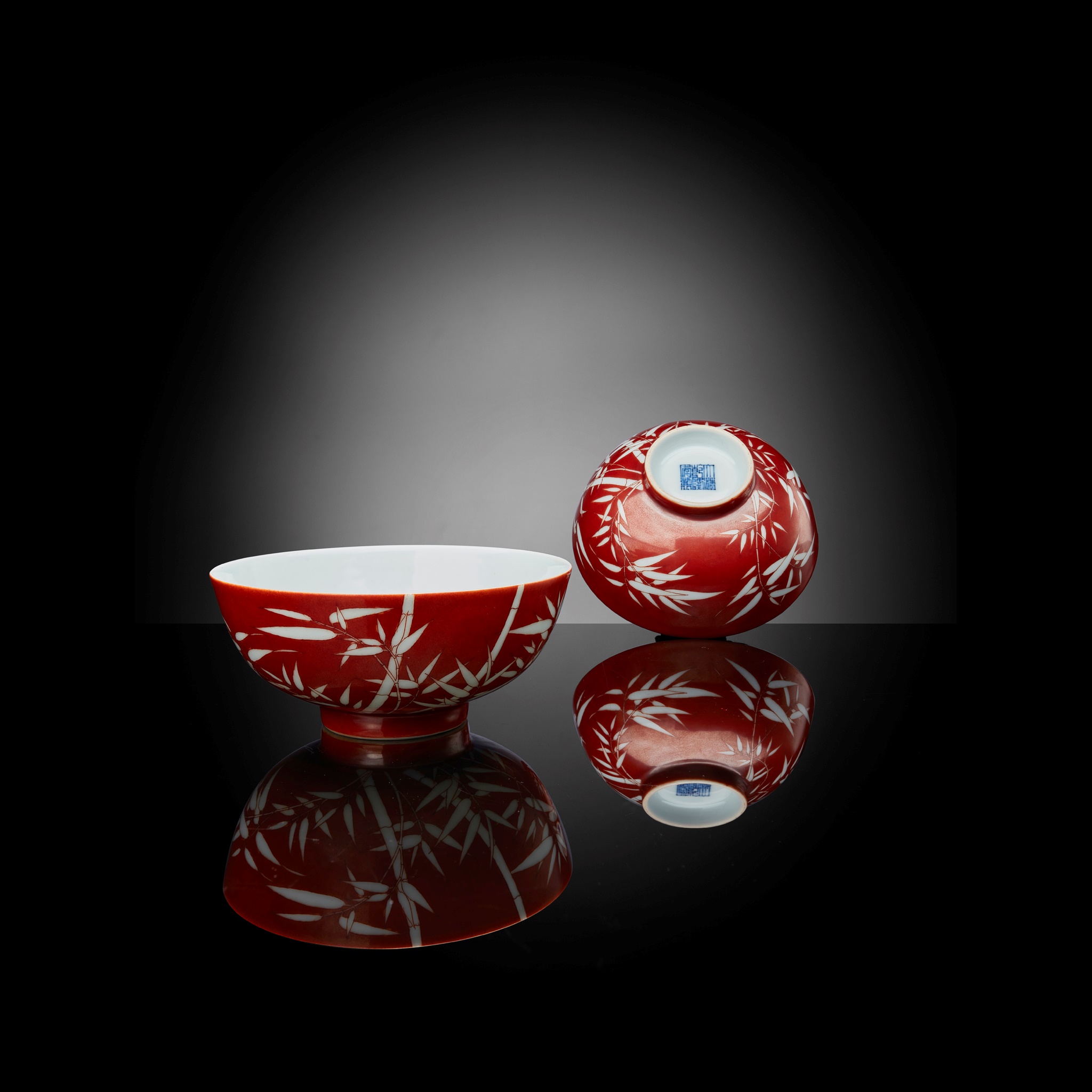PAIR OF CORAL-GROUND RESERVE-DECORATED 'BAMBOO' BOWLS
QIANLONG MARK AND PERIOD
£23,750
Auction: 13 May 2020 at 11:00 BST
Description
乾隆 珊瑚紅地留白竹紋碗一對
each finely potted with deep rounded sides rising from a short straight foot, reserve painted in rich coral-read with leafy bamboo branches, the interior glazed white, the base inscribed with a six-character Qianlong mark in underglaze blue
Dimensions
11.3cm diameter each
Footnote
Provenance: Private London collection; fomerly in a private English nobleman collection, the family acquired this pair of bowls in early 20th century in London and placed them at a monor house located around Holland park.
Note:
IMPERIAL AESTHETICS
Qianlong, in the Manchu language, means “blessed by god”. The Qianlong emperor (1711– 1799) indeed appeared to have found special favour as the Son of Heaven: he ruled for six decades, from 1736 to 1795, leading the Qing dynasty to a pinnacle in both civil and military achievements. Highly cultivated, the Qianlong emperor’s appreciation of and innovation in the arts were based on his heartfelt love of art and culture, with his devotion to artistic activities and cultural matters being found everywhere in daily life.
From the Ming period (1368-1644) onwards, the official kilns in Jingdezhen were controlled by the emperor, making imperial porcelain in large quantities for the court and the emperor to use in daily life or give as gifts. This pair of Qianlong period porcelain bowls, each delicately thrown with the exteriors rendered in brilliant iron-red enamel decorated in reserve with freely executed bamboo shoots, are a wonderful example of the craftsmanship and creativity involved in the production of imperial porcelain.
The strong visual contrast was achieved by applying iron-red enamel over white-glazed porcelain. A technique invented during the Yongzheng period (r. 1722-1735), it went on to become a favoured characteristic of Qing Dynasty imperial porcelain. A high level of skill, likely only held by imperial craftsmen, would have been required to successfully apply such a technique, as noted by The Oriental Ceramic Society’s Iron in the Fire, “the iron-red enamel is extremely sensitive to thickness and such an even effect is a considerable technical achievement.”
This pair of bowls also represents the sinicisation of the Manuchu people in Chinese history. Bamboo is a symbol of oriental elegance in the traditional Chinese Han culture, representing the character of moral integrity, modesty and loyalty. Qing dynasty was founded by the Manchu Aisin Gioro clan in Manchuria, Northeast Asia in 1636 and replaced the Ming dynasty of Chinese Han origin in 1644. During the Qianlong period, the Han culture was revered among Manchus, and the assimilation between Manchu court and Han culture is clearly reflected in the imperial porcelain of the period.
Closely comparable bowls in similar technique, design and with Qianlong mark could be found in the Palace Museum Beijing, the Nangjing Museum, the Hong Kong Museum of Art, and in the Victoria & Albert Museum (no. 74A-1883, currently at The Curtain Foundation Gallery).

